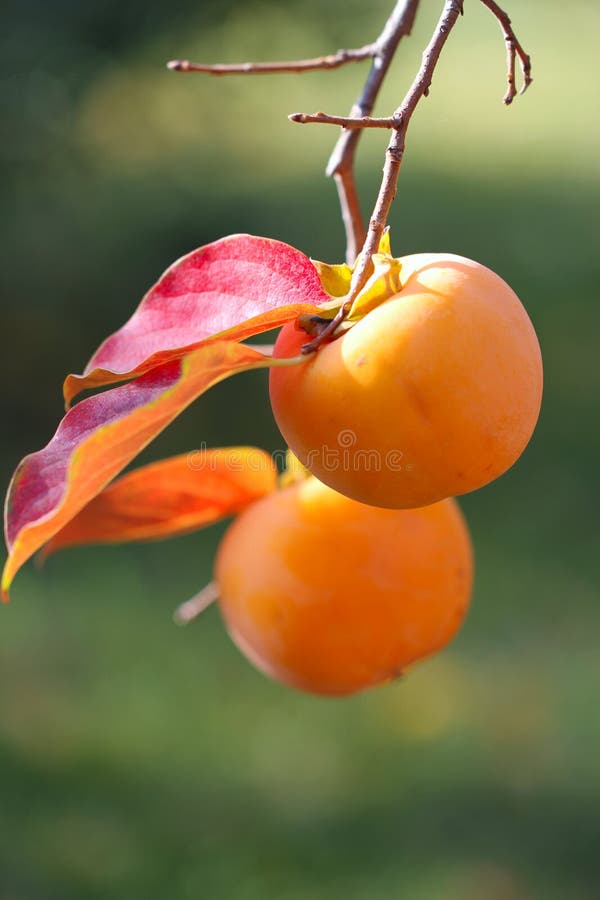

Persimmon’s hard wood is used in construction – and for making furniture, implements, and decorative items. In addition, because tannins inhibit bacterial growth, the leaves are used to wrap foods – for example, kaki-no-ha, a traditional type of sushi. The leaves, high in tannins and vitamins, were believed to aid digestion, and used to make a tea. Kakishibu, a brown liquid derived from unripe fruit, is used as a wood stain and sealant, in paper-making, and as a medicine. Persimmon fruit, leaves and wood have long been important raw materials in Japan. They’re believed to have arisen originally as mutations of the original wild, astringent trees. They can be eaten raw like an apple, while they’re still firm and crisp, and are also used in various kinds of sweet and savory dishes. They are said to resemble a very small pumpkin or a flattened tomato. The fruits of non-astringent persimmons ( amagaki) are not bitter. Sweeter than sugar, hoshigaki is also used to make traditional Japanese sweets ( wagashi). Japanese Hawaiians, for example, serve it as a symbol of transformation, signifying health and success in the New Year. Associated with good luck and longevity, it was also used in traditional New Year’s celebrations and decorations. Although vitamin C is lost, hoshigaki is much higher in calories – and historically was very important in winter, when many foods were not available. The dried product, known as hoshigaki, keeps much longer than the raw fruits. The traditional and most important method for removing bitterness is to peel astringent fruit and hang them to dry in a sunny location. Other methods include treating the fruits with alcohol or dry ice, soaking them in hot water, or freezing them until their texture is like that of sorbet. The easiest way is to let the fruits ripen completely until they’re very soft and jelly-like – and eat them with a spoon. Eaten raw, they’re very bitter and unappetizing, but there are several methods used to make them palatable. Astringent fruits, known as shibugaki, are often described as somewhat oblong or acorn-shaped. There are two basic kinds of Chinese/Japanese persimmons – determined by whether their fruit is astringent or non-astringent. Fruits are relatively large, smooth-skinned and glossy – in tones of yellow, orange or reddish-orange, depending upon the cultivar. The improved “garden varieties” were probably developed not only from chance seedlings with larger and better-tasting fruit, but also from intentional crosses of those improved forms. Rich in calories, fiber and vitamins A and C, persimmons were an important food source and became one of Japan’s best-loved trees. Over the centuries hundreds of cultivars (cultivated/garden varieties) with superior fruit were developed in China – and later, beginning about 1000 years ago, in Japan and elsewhere. The wild trees native to China had fruit that were small, astringent (bitter), and very seedy. The English common name is derived from the Algonquin language, in which the word persimmon means “dried fruit.”ĭiospyros kaki is the species of persimmon most widely planted throughout the temperate world. historically, its fruit was an important food. virginiana, is native to the Eastern U.S. Although Diospyros kaki is a tree of temperate climates, most of the approximately 200 species in the genus are tropical or subtropical trees. The genus name Diospyros is derived from the Greek words dios (divine) and pyros (grain or wheat) – hence persimmon is the “divine fruit” or “wheat of Zeus.” Kaki, its Japanese name, was chosen to be the tree’s species name (botanically, its “specific epithet”). We’re fortunate to have two trees in the Seattle Japanese Garden, the larger one located west of the pond in the garden’s orchard area.īotanical names consist of two words – genus + species. As suggested by the above haiku, trees were widely planted in Japan and central to the lives of its people. Common names include Chinese persimmon, Japanese persimmon, oriental persimmon, and kaki (柿). Its fruit has been an important food in all three countries – and is now, according to one authority, the world’s major fruit. Diospyros kaki is a deciduous tree native to China that was taken to Japan and Korea many centuries ago.


 0 kommentar(er)
0 kommentar(er)
